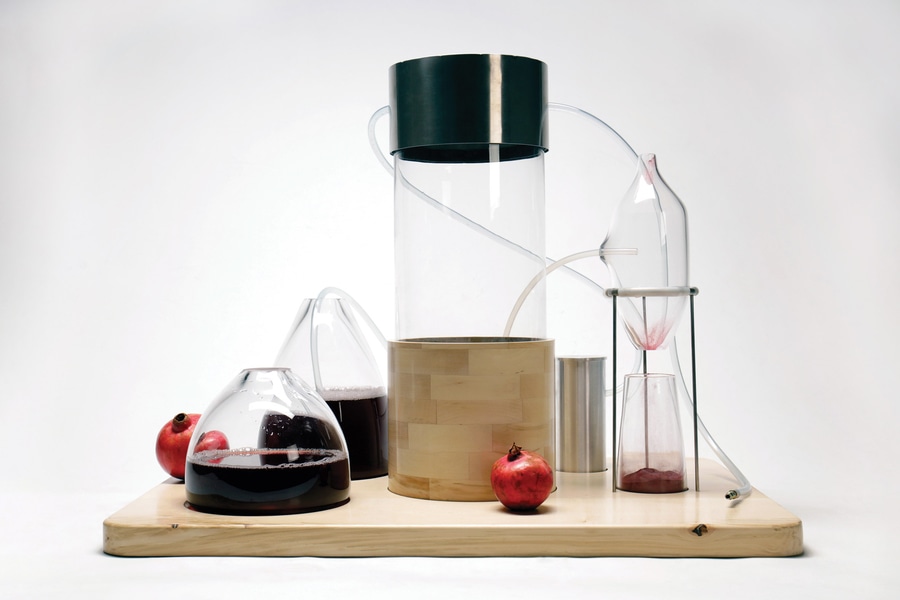
#Food Industry
Imperial graduate creates system for turning fruit and vegetable waste into dyes
A graduate from Imperial College London has devised a system for transforming fruit and vegetable waste into environmentally friendly powdered paint pigments using vaporization technology.
Imperial graduate Nicole Stjernsward developed the Kaiku system, which takes the waste from fruits and vegetables such as avocadoes, beetroots, lemons, onions and pomegranates and transforms them into raw materials for producing dyes, inks and paints through a process of vaporization.
To create the powder, the skins and peels of fruits and vegetables are boiled in water to create dye, which is then transferred into a Kaiku system reservoir where hot pressurized air is applied, forcing the dye through an atomizing nozzle and eventually into a glass vacuum chamber where a fine mist is produced that is hot enough to vaporize the dye. The dry residue particles left behind are then pulled through the chamber and eventually into a collection reservoir.
The Kaiku system builds on nature-based pigment production, deriving a ruby-red color dye from avocado skins or yellow dye from pomegranates and onions, for instance. Additionally, color results can be modified with the addition of ingredients such as vinegar and baking soda, according to Stjernsward.
Deriving pigments from nature is nothing new. It used to be that the color blue was achieved using pigments from lapis lazuli stones while the color yellow was achieved using ochre clay and the color red from the crushed up wings of beetles. Likewise, vegetables, including onions, were also used to dye fabrics. However, such methods were abandoned in the wake of industrialization, which introduced cheaper pigments created from petrochemicals and other ambiguous materials that are potentially toxic to both humans and the environment. Designed as an alternative to those potentially toxic pigments, Kaiku's production of nature-based pigments, according to Stjernsward, could potentially improve the recyclability of certain products, thereby making them more circular.
Currently, Stjernsward is working with textile designers and painters to explore other uses for the pigments.
"Because the pigments are dry powder, this means they can be used as an additive in almost any paint recipe," said Stjernsward.
"As a paint, I have successfully tried them with egg tempera, watercolour and inks. In terms of materials, I've tried them with agar bioplastics, bacterial cellulose, paper, fabric, plaster, and wood veneer. I could see applications with biomaterials, traditional artist's paints, printer inks, pen inks, and even cosmetics."
